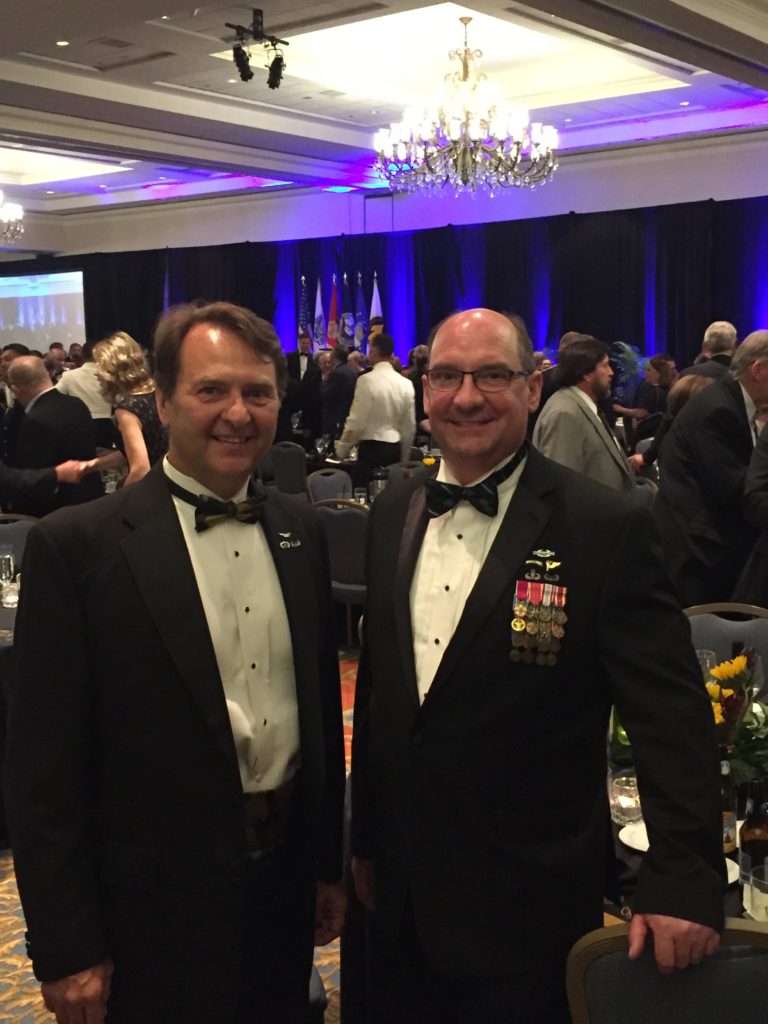Thunderdome Project Leverages Rapid Prototyping to Create New Solutions for Military, Business Challenges
June 20, 2016
What do the challenges faced by today’s warfighters and U.S. Special Operations Command (USSOCOM) have to do with business?
Plenty, as it turns out.
Cybersecurity systems, medical devices, biometrics and forensics, communications systems, and power transmission are just a few of the technology needs shared by industry and the military. So why not bring together the most creative minds from the public and private sectors to devise new approaches for solving tough problems in these areas, and prototype solutions for testing in the field?

This multidisciplinary approach to developing dual-use technologies (adaptable for both battlefield and commercial use) informed the creation of the Thunderdome Project. Spearheaded by the Tampa Hillsborough EDC in collaboration with leaders from academia, industry, and government, Thunderdome aims to leverage the entrepreneurial and innovation ecosystem to increase speed-to-market for national security technologies and support USSOCOM.
A project as ambitious as this one needed a singular leader well-versed in technology innovation, entrepreneurship, and military culture and procurement processes.
Luckily, we didn’t have to look very far to find Mark Swanson.
A graduate of the United States Military Academy at West Point, Swanson served ten years in the U.S. Army, commanding Apache helicopter units and supervising a variety of military aviation program contracts. Following his military career, he plunged into entrepreneurship, launching and selling off seven successful technology companies.
Pictured: Mark Swanson (left), CEO, Kirk Burton, COO, Thunderdome Project
In 2015, the EDC contracted Swanson to draft the Thunderdome business plan, which laid out the framework for the multidisciplinary innovation ecosystem. Today, he is busy building the participant network and helping raise funds for an accelerator that will help to fast track the commercialization of new technologies developed in response to the challenges presented by military and corporate sponsors.
In January, Swanson and Thunderdome COO Kirk Burton kicked off “Thunderdome Thursdays” on the final Thursday of each month at SOFWERX, USSOCOM’s collaborative project and event space in Ybor City. Each event has a theme – such as forensic science, Big Data, or the Internet of Things. The event starts with a presentation discussing needs for new technologies or solutions to address areas of challenge, and then participants are encouraged to step up and present ideas and prototypes for which they are seeking user/customer feedback. The events are free and open to the public.
Why focus on these areas, using these methods?
“To use the Wayne Gretzky example, we want to skate to where the puck is going,” Swanson said. “We look at technology in how it has evolved and how it is expected to evolve. As a problem-driven organization, we’re creating a system that piggy-backs on commercial innovation.”
Specific projects, such as the Thunderdome Wearable Challenge, sponsored by USSOCOM and GuideWell, are looking to gain products that use the data generated from wearables to improve decision-making capability in the areas of human performance in both military and healthcare environments.
Should a Thunderdome project meet USSOCOM’s needs, the command can procure the new technology directly from the provider. Of its more than $6 billion budget, USSOCOM has approximately $600 million that it can spend on research and development. Swanson would like to have as much of that spent at the local level as possible.
“If I am in the Army, Navy or Air Force, and I want to buy something, I have to go through the Pentagon. But USSOCOM has more flexible ‘other transaction authority.’ If they spot a technology here in Tampa and deem it ‘mission essential,’ it can be bought immediately,” he explained.
The result: a Tampa-based entrepreneur can find development funding for his or her technology from the Department of Defense as well as the commercial sector. USSOCOM already has the highest percentage of small businesses contracts in the entire U.S. government, according to Swanson. With Thunderdome’s connectivity he only hopes to see the number of contracts grow.
In the past year, Thunderdome projects have gained traction with sponsors and collaborators such as Jabil, GuideWell, as well as the USF School of Engineering.
To learn more about Thunderdome and how you can support or participate in the project, contact Mark Swanson at mark@thunderdome.io or visit http://thunderdomeproject.org/.
Want to check out the action at the next Thunderdome Thursday on June 30? Learn more and register here.
